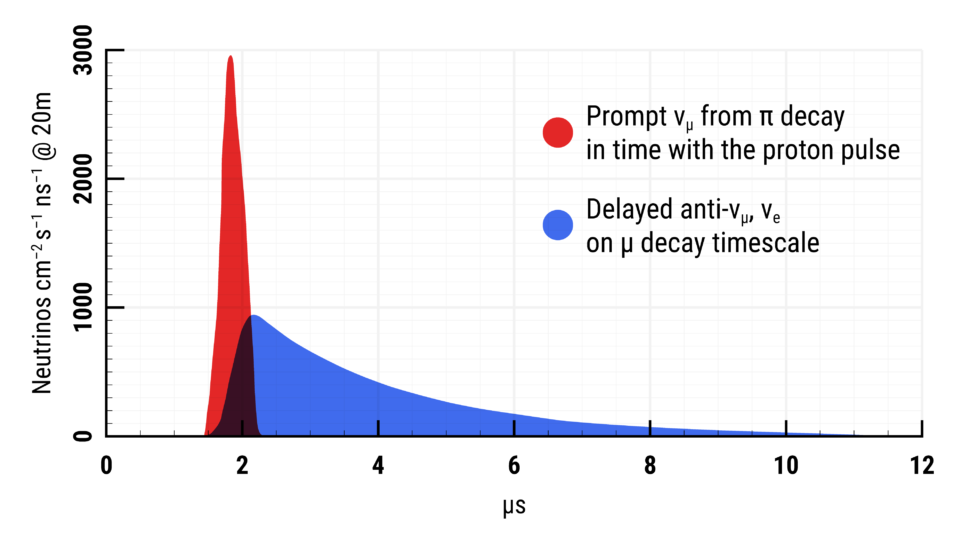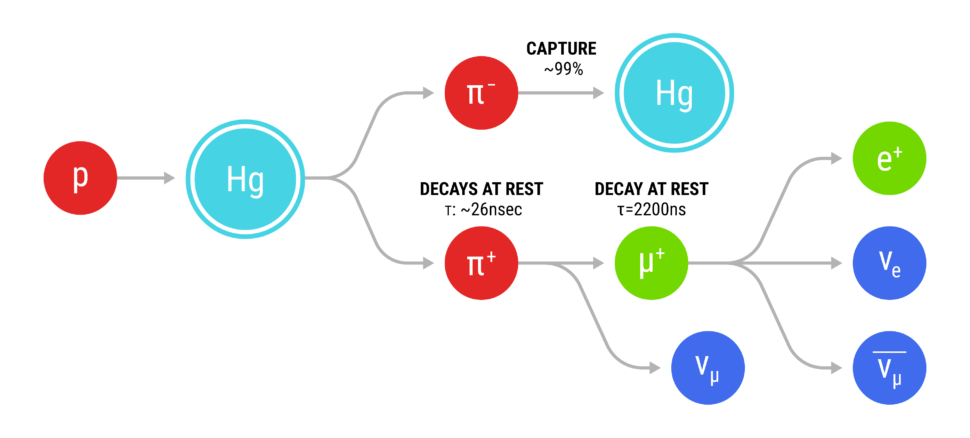The Spallation Neutron Source at Oak Ridge National Laboratory provides the world’s most intense, pulsed neutrino source. The neutrinos produced from this pion decay-at-rest source are ideal for making a CEvNS measurement. These 10s of MeV neutrinos are energetic enough to produce (relatively) high energy nuclear recoils but are not so high in energy that the coherence condition of the interaction is lost.
The short timing structure of the SNS beam is crucial to making a successful CEvNS measurement, allowing for suppression and measuring of any beam-unrelated backgrounds.




